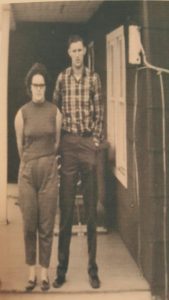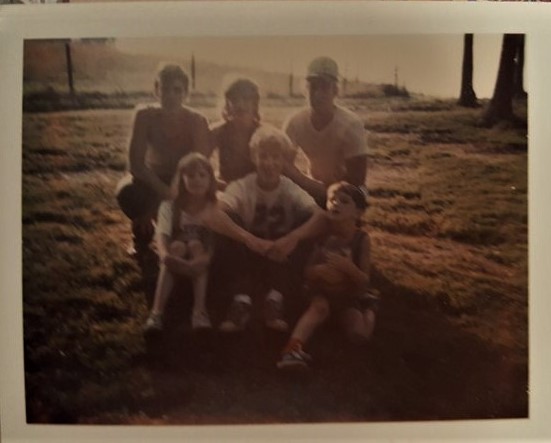Although the United States as a whole saw a great deal of change in social norms, politics, technology, and fashion during the nineteen-sixties, not much seemed to change for individuals living in small town, southwest Virginia. In an interview with a local couple, Clyde and Betty Hill, I was able to gather what realistic fashions near the University of Virginia’s College at Wise were like. To listen to the full interview and read a written transcript please click here, and to learn more about the events and fashions of the sixties please visit the Events and Fashion Timelines. Background information on Wise and Clyde and Betty’s hometown can be found here.
Clyde and Betty described their personal style much like I envisioned 50’s fashion would look like. Clyde described wearing a flannel button up with overalls or pants that were tied with a string used like a belt. He also remembered wearing t-shirts with striped sleeves and penny loafers. Betty mostly wore blouses and sweaters paired with a modest skirt or cropped pants. She also often wore brown and white heeled oxfords with ankle-length socks.

Notably, Clyde and Betty’s fashion was not influenced by the national events that marked the decade like the rest of the country’s fashion seemed to be. For instance, Betty wore pants, but not to make a statement for the women’s movement. They remembered seeing some of the stereotypical fashions of the 60’s on other individuals like the hippies, but they never mimicked those styles themselves.
Clyde and Betty also spoke about how much clothing changed from the start and end of the 60’s. Particularly, they remembered seeing flared pants and bell bottoms by the end of the decade. Interestingly, Clyde noted that many people would use the hem of these pants as a personal ash tray. The couple also remembered a major difference in the quality of fabrics and materials such as polyester and no-iron fabrics. Colors also became brighter in clothing as prints became bolder.

Regional fashions may not have changed drastically for Clyde and Betty like the fashion stereotypes of the sixties suggests, but the couple definitely noticed the massive social, economic, technological, and political moments that marked the decade. They cared little for fashion because they had to focus on the bigger picture and their well being instead, as I am sure was the case for many others in small town Appalachia. Clyde and Betty had a realistic experience with fashion that was mostly unfazed by the quintessential trends of the 60’s.
Image courtesy of Clyde and Betty Hill.
